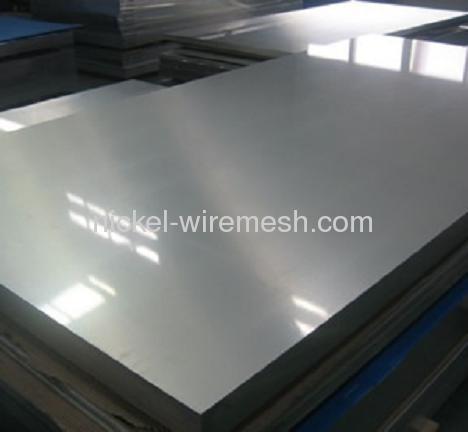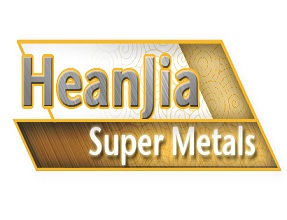Product (738)
- Pure Nickel Products (38)
- Incoloy Products (74)
- Inconel Products (72)
-
FeCrAl Product
(99)

-
Nichrome Products
(68)

- Monel Products (36)
- Hastelloy Products (49)
- Nickel Iron Alloy Product (59)
-
Nickel Copper alloys
(47)

- Nonferrous Metal Product (27)
-
Resistance Wire
(90)

- Stainless Steel Product (42)
- Mesh Demister (20)
- Others (17)
Product Forms (14)
Quality Certificate (11)
Learning Gallery (30)
Incoloy News (9)
Inconel News (22)
Molybdenum News (7)
Nikrothal News (4)
Nichrome News (13)
Titanium News (2)
Nickel News (8)
Alloys House (30)
Tools (27)
Nickel alloy News (30)
Latest Buzz (30)
nickel chrome copper iron alloys news (28)
Credit Report
Products Index
Company Info
Heanjia Super-metals Co., Ltd. [China (Mainland)]
Business Type:Manufacturer, Trading Company
City: Beijing
Province/State: Beijing
Country/Region: China (Mainland)
Tools
What is Inconel sheet

What is Inconel sheet
Inconel Alloys
Inconel alloys are generally known for their resistance to oxidation and their ability to maintain their structural integrity in high temperature atmospheres. There are several Inconel alloys that are used in applications that require a material that does not easily succumb to caustic corrosion, corrosion caused by high purity water, and stress-corrosion cracking. While each variation of Inconel has unique traits that make it effective in different circumstances, the majority of the alloys are used frequently in the chemical industry.
Inconel Huskit
Inconel is the trade name for a group of more than 20 metal alloys made by Special Metals Corporation. The alloys are extremely resistant to oxidation and high temperatures. Most of the alloys have applications in the chemical industry.
Inconel 601 Sheet Strip Coil
Inconel is a registered trademark of Special Metals Corporation that refers to a family of austenitic nickel-chromium-based superalloys. Inconel alloys are typically used in high temperature applications. It is often referred to in English as "Inco" (or occasionally "Iconel"). Common trade names for Inconel include : Inconel 625, Chronin 625, Altemp 625, Haynes 625, Nickelvac 625 and Nicrofer 6020.
Inconel Vessel
Inconel alloys are oxidation and corrosion resistant materials well suited for service in extreme environments. When heated, Inconel forms a thick, stable, passivating oxide layer protecting the surface from further attack. Inconel retains strength over a wide temperature range, attractive for high temperature applications where aluminum and steel would succumb to creep as a result of thermally-induced crystal vacancies. Inconel's high temperature strength is developed by solid solution strengthening or precipitation strengthening, depending on the alloy. In age hardening or precipitation strengthening varieties, small amounts of niobium combine with nickel to form the intermetallic compound Ni3Nb or gamma prime. Gamma prime forms small cubic crystals that inhibit slip and creep effectively at elevated temperatures.
Inconel alloys Series
1.Inconel 600 : Solid solution strengthened
2.Inconel 625 : Acid resistant, good weldability
3.Inconel 690 : Low cobalt content for nuclear applications, and low resistivity
4.Inconel 718 : Gamma double prime strengthened with good weldability
5.Inconel 751 : Increased aluminum content for improved rupture strength in the 1600°F range
6.Inconel 792 : Increased aluminum content for improved high temperature corrosion properties, used especially in gas turbines
7.Inconel 939: Gamma prime strengthened with good weldability
Inconel is a difficult metal to shape and machine using traditional techniques due to rapid work hardening. After the first machining pass, work hardening tends to plastically deform either the workpiece or the tool on subsequent passes. For this reason, age-hardened Inconels such as 718 are machined using an aggressive but slow cut with a hard tool, minimizing the number of passes required.
Alternatively, the majority of the machining can be performed with the workpiece in a solutionised form, with only the final steps being performed after age-hardening. External threads are machined using a lathe to "single point" the threads, or by rolling the threads using a screw machine. Holes with internal threads are made by welding or brazing threaded inserts made of stainless steel. Cutting of plate is often done with a waterjet cutter. Internal threads can also be cut by single point method on lathe, or by threadmilling on a machining center. New whisker reinforced ceramic cutters are also used to machine nickel alloys. They remove material at a rate typically 8 times faster than carbide cutters. 718 Inconel can also be roll threaded after full aging by using induction heat to 1300 degrees F without increasing grain size.
Inconel Thermisistor Application in Military
Welding inconel alloys is difficult due to cracking and microstructural segregation of alloying elements in the heat affected zone. However, several alloys have been designed to overcome these problems. The most common welding methods are gas tungsten arc welding and electron beam welding.
Inconel is often encountered in extreme environments. It is common in gas turbine blades, seals, and combustors, as well as turbocharger rotors and seals, electric submersible well pump motor shafts, high temperature fasteners, chemical processing and pressure vessels, heat exchanger tubing, steam generators in nuclear pressurized water reactors, natural gas processing with contaminants such as H2S and CO2, firearm sound suppressor blast baffles, and Formula One and NASCAR exhaust systems. Inconel is increasingly used in the boilers of waste incinerators.
The Joint European Torus vessel is made in Inconel. North American Aviation constructed the skin of the X-15 rocket plane out of an Inconel alloy known as “Inconel X”. Rocketdyne used Inconel X-750 for the thrust chamber of the F-1 rocket engine used in the first stage of the Saturn V Booster. Inconel is also used for the lightweight Sport Exhaust of a recent supercar, the McLaren MP4-12C. Rolled Inconel was frequently used as the recording medium by engraving in black box recorders on aircraft. Alternatives to the use of Inconel in chemical applications like scrubber, columns, reactors, and pipes is Hastelloy, perfluoroalkoxy (PFA) lined carbon steel or fiber reinforced plastic.
Pre Page:
What is Incoloy stand for
Next Page:
What does Inconel sheets, plates and...



